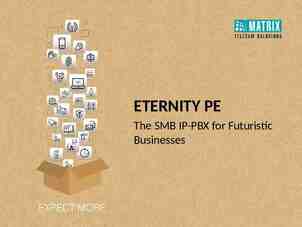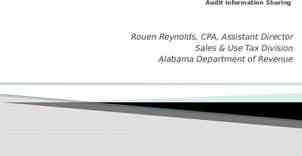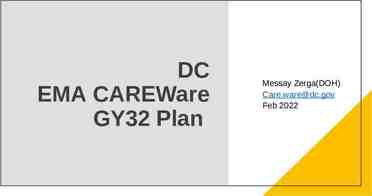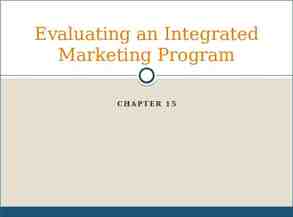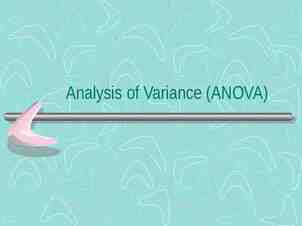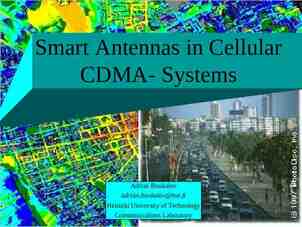Pandemic Electronic Benefits Transfer (P-EBT) JO DAWSON,
45 Slides1.84 MB

Pandemic Electronic Benefits Transfer (P-EBT) JO DAWSON, PROGRAM MANAGER CHILD NUTRITION PROGRAMS/DEPART MENT OF EDUCATION & EARLY D EVELOPMENT

Overview of P-EBT Pandemic Electronic Benefit Transfer (P-EBT) provides nutrition benefits to students who have lost access to free or reduced-price school meals, including students who have hybrid schedules that reduce the number of days or hours they are in the school building, or who are fully remote learning (even if their school is open to some students). The State of Alaska’s application is in pending status but we anticipate P-EBT benefits to be issued this spring.

P-EBT 2.0 Intent Similar to other federal programs – P-EBT was put into place to provide assistance and relief during the COVID Pandemic. To help families of school age children during the pandemic. Money to buy food that replaces the school meals missed while school buildings have been closed or operating with reduced hours due to the pandemic. Issued when schools buildings were closed or remote, or a reduced schedule, for 5 consecutive days or more

What About Meals Provided? Thank you for all your efforts to provide meals for students through grab & go, bus delivery, meal boxes, etc. P-EBT is separate from these meals served. The only time meals you serve will impact P-EBT benefits is when meals are served and consumed on campus as part of an educational school day. Meal Service as Part of an Education Day

Student Eligibility Must be enrolled at a school that is approved to provide USDA National School Program and/or School Breakfast Program and Student must be eligible for free or reduced-price meals by one of the following: Individually eligibility by meal application or status in SNAP, TANF, Migrant, Food Distribution Program on Indian Reservations (FDPIR), foster care, homeless/runaway or School site is approved to participate in school nutrition under the Community Eligibility Provision

What about Pre-K or Head Start Programs? May include Pre-K if these students are “enrolled” at your district (have an AKSID) and normally participate in the National School Lunch Program (NSLP). Head Start agencies provide meals under a different program and are not enrolled at the district, even if they receive meals at the school site. P-EBT for childcare is coming: For children under the age of 6. For children in families that receive Supplemental Nutrition Assistance Program (SNAP) benefits. Will be cross checked to school P-EBT to ensure no duplicate benefits. Issued directly by the Department of Health and Social Services/Division of Public Assistance (DHSS/DPA)

What about families in Community Eligibility Provision (CEP) districts/schools that don’t want or need benefits? Information provided with card on how to decline benefits Benefits are not transferable Cannot be gifted or donated A CEP school is one that is able to serve all meals at no charge to families and does not take income-applications due to the high number of children eligible w/o application (i.e. SNAP, TANF, Migrant, foster children, homeless/runaway, and FDPIR)

Who is NOT Eligible for P-EBT? Students who are home-schooled. Children who are no longer enrolled in a National School Lunch Program (NSLP) /School Breakfast Program (SBP) participating school and are being homeschooled are not eligible to receive P-EBT benefits. Students enrolled at schools that normally do not participate in the NSLP.

What about students without a permanent or current address? Districts may choose to have students P-EBT cards sent to the district. Must receive approval from DEED/CNP Develop process that: Safeguards cards. Internal controls. Identifies individuals who have access to cards and authority to distribute.

Multi-Agency Collaboration District DEED/CNP DHSS/DPA Outreach School Site Data Enrollment Data (by Month) Outreach Troubleshoot data issues Process lists Submit to DPA for payment Mails P-EBT cards and instructions Issues P-EBT payments P-EBT Hotline

LEA Tasks OUTREACH SCHOOL SITE DATA CHILD ENROLLMENT

Outreach

Sample Flyers REQUESTS APPLICATIONS CEP SCHOOL SITE

Application Outreach Outreach materials located on the web at https://education.alaska.gov/cnp/pandemic-ebt

Why applications at the end of the year? Student eligibility for P-EBT is based on student eligibility for Free or Reduced-Price meals 100% of Alaska districts were able to provide meals for free meals in SY20-21 18 districts traditionally accept applications for one or more school sites. Applications were down 60% There is no stand-alone application for P-EBT

School Site Data

School Benefit Level Information Simplifying Assumptions Due to the complexity and availability of data, the U.S. Department of Agriculture (USDA) has allowed the use of “simplifying assumptions” to determine benefit levels. Students will receive benefits based on the school where they are enrolled, regardless of an individual student's attendance or educational model.

School Site Data & Benefit Start Point The elements for benefits are that the child is eligible, attends a school that is eligible and benefits are calculated for the days of building eligibility: The school building is closed (including any delayed start or early closure to the school year), or the school is operating with reduced attendance or hours – for 5 or more consecutive days. School closures do not include weekends, or days when the school site is closed due to a holiday or regularly scheduled break

School Benefit Level Information Steps School P-EBT Program Eligibility 2 Steps School P-EBT eligibility requires a school to have been closed to on-campus learning OR operated with reduced on campus attendance/hours due to COVID-19. Report the 5th day of the first 5 consecutive days where school site was closed or remote/reduction in hours After meeting the 5-day requirement, report all other remote instructional days

Example 1: 5-Day Start Period

Example 2: Non-Qualifying Start Date: Intermittent Remote Learning

Once Start Date Established 5-consecutive days of building closure, including delayed start, or reduction of hours On-going tracking for additional building closures or reduction of hours

Requirements for Education Model Educational Model vs “Meal Service as Part of an Education Day” SFSP or NSLP/SBP Meal Eaten on campus as part of an education day Grab and go meals do not count as meal service as part of the educational day

Simplifying Assumptions – “Majority Model” School status and eligible benefit days will be based on the following. Students Enrolled: The school status/eligible benefit days assigned will be based on the meal service available to 51% of the students enrolled at that school. Instructional Days: The school status/eligible benefit days will be based on the available meal service during 51% of the instructional days in the month being reported.

Simplifying Assumptions – “Majority Model” Example 1 Students Enrolled: The school status/eligible benefit days assigned will be based on the meal service available to 51% of the students enrolled at that school. Example: Smith Elementary is a K-5 School. During October, Grades K-1 were on a hybrid schedule. Grades 2 – 5 were remote. Most enrolled students were following a remote model and receiving no meals as part of the school day.

Simplifying Assumptions – “Majority Model” Answer 1 Students Enrolled: The school status/eligible benefit days assigned will be based on the meal service available to 51% of the students enrolled at that school. Example: Smith Elementary is a K-5 School. During January, Grades K-2 were on a hybrid schedule. Grades 3 – 5 were remote.

Simplifying Assumptions – “Majority Model” Count Hybrid Remote Smith Elementary Enrollment K 32 Grade 1 53 Grade 2 46 Grade 3 61 Grade 4 58 Grade 5 49 131 168

Benefit Level Example 1 Smith Elementary is a K-5 School. During October Grades K–1 were on a hybrid schedule attending school 2 days per week. Grades 2–5 were remote. Most enrolled students were following a remote model and receiving no meals as part of the school day. What Benefit Level?

Benefit Level Example 1 Answer Benefit level Level 5 Remote No days on campus Level 4 Hybrid 1 day on campus Level 3 Hybrid 2 days on campus Level 2 Hybrid 3 days on campus Level 1 Hybrid 4 days on campus

Benefit Level Example 2 Jones Elementary is a K–5 School. In February, all grades started the month remote. On February 22, all students started a hybrid schedule with three days on campus. Most of the month, the school was following a remote model with no meal service as part of the school day. What Benefit Level?

Benefit Level Example 2 Answer Benefit level Level 5 Remote No days on campus Level 4 Hybrid 1 day on campus Level 3 Hybrid 2 days on campus Level 2 Hybrid 3 days on campus Level 1 Hybrid 4 days on campus

Benefit Level Example 3 Miller Elementary is a K-5 School. In February, all grades start a Hybrid schedule. Students with last names A – K: on campus Monday and Tuesday Students with last names L – Z: on campus Wednesday and Thursday No students are on campus on Fridays What Benefit Level?

Benefit Level Example 3 Answer Benefit level Level 5 Remote No days on campus Level 4 Hybrid 1 day on campus Level 3 Hybrid 2 days on campus Level 2 Hybrid 3 days on campus Level 1 Hybrid 4 days on campus

School Benefit Level Information Reporting

School Benefit Level Information Reporting Example

Child Enrollment

Benefits are Based on Enrollment Data Data collection will be through Student Report Manager (SRM) Based on Child Nutrition SRM collection with edits: Address fields required Enrollment months required Added economically disadvantaged This collection will not replace the Child Nutrition SRM used for Direct Certification CHILD ENROLLMENT Draft manual posted on CNP P-EBT https://education.alaska.gov/cnp/pandemic-ebt Collection template still in development

SRM —Best Practices Similar to the verification process—Conduct a second-party confirmation review. A second person should review your file: The number of students should closely reflect free and reducedprice eligibility from your 2020 October Site Data or OASIS report.

Is it ok that we share student information? Section 1101(e) of the Families First Coronavirus Response Act (FFCRA, P.L. 116127) states: “Notwithstanding any other provision of law, the Secretary of Agriculture may authorize State educational agencies and school food authorities administering a school lunch program under the Richard B. Russell National School Lunch Act (42 U.S.C. 1751 et seq.) to release to appropriate officials administering the supplemental nutrition assistance program such information as may be necessary to carry out this section.” Questions or concerns should be directed to your district administration or legal counsel.

Benefit Levels

School Benefits & Students Students will receive benefits based on the school where they are enrolled, regardless of an individual student's attendance or educational model.

How Much in Benefits Will Families Get? Benefits are equal to 10.99 per day that eligibility conditions were met. This example is based on a 20-day instructional month Benefit amounts could vary from one child in household to another. Benefit level Calculation Dollar Amount Level 5 10.99 x 20 x 100% 219.80 Level 4 10.99 x 20 x 80% 175.84 Level 3 10.99 x 20 x 60% 131.88 Level 2 10.99 x 20 x 40% 87.92 Level 1 10.99 x 20 x 20% 43.96

How Do Families Get P-EBT? There is no application. Benefits will be automatically issued to eligible students on a new EBT card sent to their household in the mail. Each eligible student will receive a separate card.

The Future of P-EBT American Rescue Plan of 2021 extended P-EBT into summer months and next school year Summer: Guidance allows for students eligible at the end of the year eligible for summer P-EBT (estimated 55 days @ 10.99 604.45) Application will be allowed in the summer for newly eligible students Schools unable to approve over summer, may approve and report when school resumes New plan must be submitted and approved by USDA SY21-22 School meal programs will have a 100% free option again so application issues for P-EBT will continue next school year

Contact for Questions DEED Child Nutrition: Jo Dawson – 465-8708 [email protected] State Report Manager: Tim Workman – 465-8579 [email protected] Learning Model Reporting: Debbie Soto – 465-8712 [email protected] P-EBT Benefits: 800-478-7778

